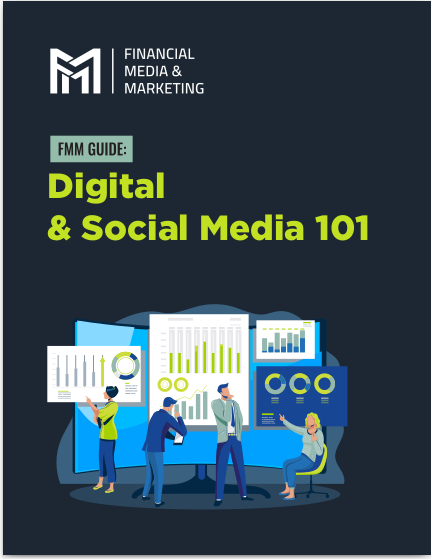Key Takeaways:
-
You can boost client reviews naturally by making it easy, engaging, and part of the client experience without feeling pushy.
-
Automation, timing, and personalization are key strategies to ensure clients leave positive reviews effortlessly.
Why Client Reviews Matter More Than Ever in 2025
In today’s digital world, client reviews carry more weight than ever. With more people relying on peer feedback before making decisions, financial advisors who don’t actively seek reviews risk losing potential clients to competitors with a stronger online presence. The challenge? Asking for reviews can feel awkward, pushy, or even uncomfortable. But it doesn’t have to be that way.
By implementing the right strategies, you can encourage satisfied clients to leave glowing testimonials—without feeling like you’re begging for them. Here’s how you can do it.
1. Make Leaving Reviews Effortless
Remove All Barriers to Writing a Review
Your clients are busy, and if leaving a review requires too much effort, they won’t do it. You need to make it as easy as possible. Instead of sending generic review requests, provide direct links to where they can leave feedback. The fewer steps, the better.
How to simplify the review process:
-
Use a simple, direct call-to-action like: “We’d love to hear your thoughts! Click here to leave a quick review.”
-
Pre-fill some details in the review request (without scripting their words) to make the process feel even easier.
-
Optimize review forms for mobile devices—most people will leave reviews on their phones.
Timing is Everything
Asking at the right moment increases the chances of getting a review. The best time is when your client has just experienced the value you provide, such as right after a successful consultation or when they express satisfaction.
Ideal moments to request a review:
-
Right after a client thanks you for your help.
-
After a milestone, like completing a financial plan or tax season wrap-up.
-
When you receive an email or message from a happy client.
Use Gentle Automation
You don’t have to manually ask every single client for a review. Instead, use automated emails or texts to follow up without being intrusive.
Best practices for automated requests:
-
Personalize the message so it doesn’t feel like a mass request.
-
Set reminders so clients who miss the first request get a follow-up.
-
Keep the request short and positive.
2. Use Subtle, Personalized Requests
Tailor the Ask to Each Client
A generic review request can feel impersonal and easy to ignore. Instead, make it about them. When you personalize your request, it feels more like a natural part of your interaction.
Ways to personalize a review request:
-
Reference a specific conversation or service they found valuable.
-
Mention their financial goals or progress.
-
Acknowledge their busy schedule and make the request quick and simple.
Ask for Feedback First, Then a Review
Instead of outright asking for a review, frame it as a request for feedback. People are more likely to share their experiences when they feel like they’re helping improve your services. Once they’ve given positive feedback, it’s easier to ask them to share it publicly.
How to transition from feedback to review:
-
Start with: “We’re always looking to improve. How was your experience?”
-
If the response is positive, follow up with: “We’d really appreciate it if you could share your thoughts in a review.”
Leverage Social Proof to Encourage More Reviews
When clients see that others have left reviews, they feel more comfortable adding their own. You can highlight existing reviews to subtly encourage participation.
Ways to showcase social proof:
-
Share positive reviews on your website and social media.
-
Mention how much reviews help new clients make informed decisions.
-
Thank clients publicly for their feedback to show appreciation.
3. Offer Incentives That Feel Natural
Create a Culture of Appreciation
Clients are more likely to leave a review when they feel genuinely appreciated. Instead of making reviews feel like a transaction, focus on rewarding engagement.
Non-monetary ways to encourage reviews:
-
Publicly thank clients who leave a review (if they’re comfortable with it).
-
Feature reviews on your website or email newsletter.
-
Offer exclusive content, like financial tips or a special report, as a thank-you.
Make It a Two-Way Street
Your clients also want to be seen and heard. By engaging with their reviews and responding to feedback, you create a sense of connection that encourages more people to participate.
How to engage with client reviews:
-
Reply to every review with a personalized thank-you.
-
Address any concerns raised in reviews professionally and helpfully.
-
Share client success stories (with permission) to celebrate their financial progress.
Run Limited-Time Review Campaigns
If you need a surge in reviews, consider running a short-term campaign where you encourage clients to share their thoughts within a specific timeframe. This creates urgency without pressure.
How to structure a review campaign:
-
Choose a deadline (e.g., “Help us reach 50 reviews this month!”).
-
Make it clear why reviews are valuable to both new clients and your business.
-
Express gratitude in every interaction to keep it positive.
Strengthen Your Online Reputation Without the Awkwardness
Getting more client reviews doesn’t have to be uncomfortable. By making it effortless, personal, and rewarding, you can build a strong online reputation that attracts new clients and strengthens your credibility. The key is to integrate review requests naturally into your client experience, ensuring they feel like a part of the conversation rather than an obligation. Start today and watch your reviews—and your business—grow.










